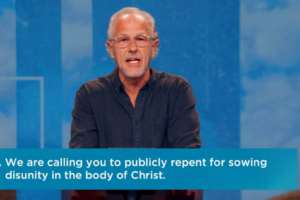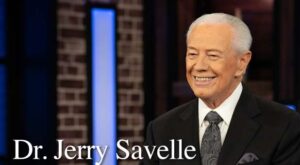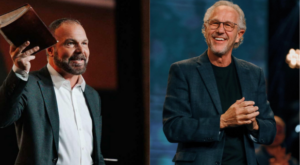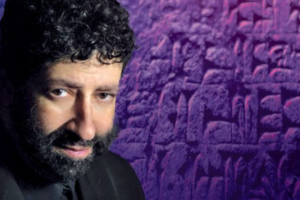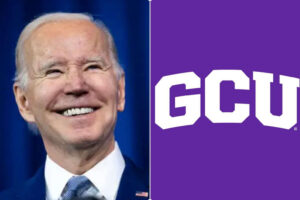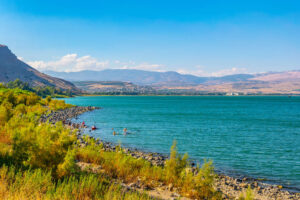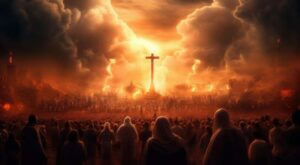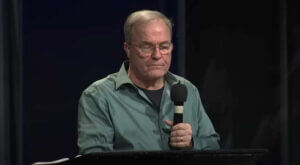Recently (Jun 7-9, 2019) I had the privilege of speaking in Stornoway, Isle of Lewis, Scotland. Rev. Kenny Borthwick, a Church of Scotland minister, was the other speaker. We were invited by the Rev. Tommy MacNeil, minister of the Martin’s Memorial Church in Stornoway. This year is the 70th anniversary of the beginning of the Hebrides Revival. The purpose of the Hebrides Revival Conference was to thank God for that wonderful era. Of course people prayed that God might be pleased to do it again. And God may yet do it again! I certainly hope so.
The “epicenter” of this revival 70 years ago was in Barvas, some 12 miles from Stornoway. One can easily find material from Google and in some books that have described this phenomenon. I had read as much as I could about the revival before I went there.
The main person associated with the Hebrides Revival was Rev. Duncan Campbell (1898-1972). But Duncan Campbell did not bring the revival; it was already in progress when he arrived. By “revival” I do not mean a planned, orchestrated series of meetings. In America, we hastily use the word “revival”; the word “mission” is preferable. Why? Because true revival is a sovereign work of the Holy Spirit. So it was in the Hebrides in 1949 and the next couple of years. The Holy Spirit was the architect and sustainer of this extraordinary event.
I first heard of the Hebrides Revival from Dr. John Sutherland Logan, the Scotsman whom God used on Nov. 24, 1954 to help me see I was called to preach. I later began to hear of secondhand reports of the unusual phenomena that accompanied this outbreak of the Holy Spirit. It was Dr. Logan who told me how Duncan Campbell, seated on the platform ready to speak in Northern Ireland, suddenly felt an impulse to leave at once and go to Harris, also a part of the Hebrides. He left the platform immediately without addressing the congregation and took a boat to Harris. Without telling them he was coming, he landed at Harris where people were waiting for him as if it had been planned. Revival then broke out in Harris.
Here are some observations that gripped me while I was in Stornoway last weekend, having asked all the questions I could think of.
1. The preaching during the Hebrides Revival was in Gaelic. Those converted in homes after the services included those who spoke English; that is when non-Gaelic speakers were saved.
2. The town of Stornoway—the capital of the Isle of Lewis—was completely bypassed. The revival came only to small towns or villages in the Hebrides. The reason for this was thought to be that the ministers in Stornoway opposed the revival.
3. The Hebrides Revival was all about people being saved—converted. There is no doubt that Christians were “renewed”—yes. But the stress was on the need for people to be saved.
4. The pervading assumption in people’s minds was their final destiny—heaven or hell. Duncan Campbell used a phrase, “hell deserving sinners”—the sort of expression one doesn’t hear often these days. Most people nowadays feel that they are entitled, or that God owes them something.
5. According to Duncan Campbell, the preaching was expository. I find this interesting. I wish it were not so, but I suspect that much preaching one hears today is motivational rather than biblical.
6. People did not want to go home when a service was over. The people would either linger at church or often go into nearby homes for further fellowship and singing. Conversions would often take place in homes as well as in church. People typically left for their own homes at 2 o’clock in the morning. Or later.
7. The Hebrides Revival in many ways was a young people’s phenomenon. Many teenagers and those under the age of 40 were converted. There are four known persons from Barvas still living that were saved during the Hebrides Revival. I met them all. They were mostly teenagers when they were converted.
8. Many people walked several miles to reach the church, some 12 miles each way, and never got blisters on their feet or felt tired.
9. People would be saved not just in a church building but when walking in the countryside. There was a great sense of the fear of God all over the area. Spontaneous conversions happened everywhere. One well-known story that came out of the Hebrides Revival was when a mother and her 21-year-old son were walking on a country road. Suddenly her son William was overcome with emotion and began to cry. She said to him, “Oh Willie, at last you have come home.” I met that man last weekend and spend time with him—the Rev. William MacLeod, now 92, a retired minister in the Church of Scotland.
10. Unusual manifestations would appear spontaneously. Much has been written on these, so I will not spend a lot of time here—for example, lights appearing to show people the way home in the dark, a home shaken as if from an earthquake (dishes and silverware falling off the table) while people were praying and worshiping or over 200 people meeting in one place spontaneously at the police station in the middle of the night, not knowing why they were there—but then began to pray and worship God. The only explanation given: The constable was a God-fearing man, and that is why people found themselves going to that spot—each not knowing another was also coming. Some walked many miles.
11. People functioning with little or no sleep. It was common for services—or in people’s homes after the meetings—to go into the night and morning hours. Some would get home at 5 a.m. and go off to work at 7 a.m. and work all day without getting tired! Imagine that. However did they do it? This sort of thing—as so much as can be read about this revival—defies a natural explanation, especially when you consider that this movement of the Spirit lasted three to four years.
12. The opposition to the Hebrides Revival came not from the world but from Christians. The people who opposed the manifestations generally missed out on this move of the Spirit. Duncan Campbell had become a part of the Faith Mission, an organization influenced partly by John Wesley’s teaching. It was regarded by some staunch Calvinists as being Arminian. Although Duncan Campbell remained a minister of the United Free Church of Scotland—never abandoning his robust view of the sovereignty of God, some regarded him as Arminian—which he wasn’t.
See an error in this article?
To contact us or to submit an article







